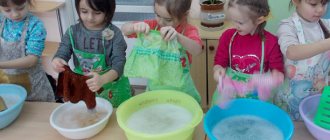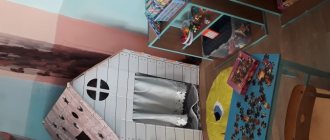Hello, dear parents and readers of our blog. If you decide to develop your baby’s imagination and creativity right from the cradle, then you just need to pay attention to such a method as finger painting.
It is useful to learn how we finger paint for the little ones, because this is the easiest way for them to learn about the world of creativity. Parents can start teaching their babies as early as one year of age. In this article we will tell you what you can use to draw with and what techniques to use.
What are the benefits of finger painting?
You can start drawing with your child as early as 7-8 months. The sooner you introduce your child to the world of creativity will affect his perception of the world and overall development in the future.
As you know, at the fingertips, and throughout the palm, all the main points responsible for different human organs are located. Finger massage for children is extremely useful, as it stimulates the speech center and children begin to speak faster. When drawing with your fingers or all your palms, the nerve endings are also stimulated, which is equivalent to a massage.
Finger painting has this effect on a child:
- Develops speech by massaging fingers;
- Develops imaginative and abstract thinking;
- Liberates the baby, releases his innate creative potential;
- Develops artistic taste and teaches colors;
- The child learns about the world through the color and texture of paints and experiments with them;
- Develops imagination.
In addition to paints, you can draw with other materials.
We play finger painting with children under one year old
A child under the age of one year should be taught to draw gradually. You can show him every day, using your example, how to draw with your finger using paints, drawing lines and dots on a sheet of paper. The lesson may last only a couple of minutes, but is carried out systematically. After a few such lessons, the baby himself will reach for the paints to try to do the same as his mother.
You can offer your child various finger painting games. At the same time, you can draw not only with paints. “Kitchen material” is also suitable for this - flour, fine grains, salt or even sand.
You can pour this “stuff” into a baking sheet or a large cardboard box lid. Having distributed the contents in a thin layer over the surface, you can begin to draw with your finger, drawing lines and circles:
For the little ones, the games will be short and the material will be simple to keep their interest. Before the age of one year, it is better not to give your child real paints, even the most “harmless” ones, because he will still taste them.
A substitute for paints for the little ones is natural food dyes. You can use the products themselves: berries, carrots, spinach, beets. The juice of these berries or vegetables should be squeezed out and poured into plates. The baby will dip his finger there and draw on paper. At first, you need to show your child by example, luring him into the process.
In addition to juice, you can also draw with pieces of boiled carrots or beets, as well as crush currants or raspberries directly on the sheet. Children at this age do not yet care about the result of their work, they are interested in the process itself, so do not try to teach your child “how to”, let him just do what he wants.
Of course, before creative entertainment, the mother needs to dress the child in “work clothes” - a blouse and pants that you don’t mind getting dirty, and also sit the baby in her arms or in a high chair covered with a material that is easy to clean. In this case, the child will enjoy the creative process, and the mother’s nerves will be in order:
Invite your child to draw with semolina porridge. Yes, yes, porridge... not very liquid semolina porridge is an excellent material that spreads so well. A plastic children's table, a large tray or just paper can serve as a canvas. And if you add food coloring (a little juice) to the porridge, you get paint. Let the baby smear these “paints” on the table, try them by touch and study all their properties. The advantage is that the child will not get poisoned even after tasting them. Offer the artist a couple of colors and let him try to mix them.
Film your child in the creative process and you’ll get a wonderful story for the archive. In no case should you forbid your child to draw the way he wants. Give him freedom of action, taking care of the safety of these actions in advance and monitoring him.
Consultation for teachers of preschool educational institutions “Drawing with fingers and palms”
Emma Couular
Consultation for teachers of preschool educational institutions “Drawing with fingers and palms”
Consultation for preschool teachers on the topic : Drawing with fingers and palms .
For the first time the technique
«Finger drawing»
was described in 1932, and in our time
finger painting has gained particular popularity. At exhibitions, museums, galleries, we can see paintings drawn using only our fingers . Have YOU ever thought that you could create your own masterpiece? For this you have a significant prerequisite - five fingers on your right hand and five on your left.
In the West, not so long ago, exhibitions and auctions of finger-painted babies ! These pictures are reminiscent of impressionist pictures, which are based on intuitive drawing . And they are much more brilliant than adults, because their brains are not yet filled with stereotypes, clichés, and internal attitudes. Children give free rein to their limitless imagination. And they usually use cheerful colors. Beauty! By allowing the child to experience everything and try it for himself, we expand children’s knowledge and creative horizons. After all, a baby stained with paint can be easily washed with soap and water and a napkin. And the desire to create, suppressed in early childhood, may never awaken.
The most accessible way to develop a child’s creativity is to interest him in drawing . Through creativity, the baby develops imagination, imaginative thinking and taste.
Little artists will really enjoy drawing with their fingers and palms .
What is the significance of finger painting for a child ? This type of drawing develops fine motor skills well, which affects not only the mind, but also the use of one’s pens, and promotes the development of speech.
- How?
The fact is that the center that responds is located in the cerebral cortex very close to the speech center, and when it starts working, it makes the second one work too.
Finger painting is a good reflex massage. There is a certain point on that is connected to all organs of the body. By massaging these points, you can improve your condition in general.
Development of fine motor skills of the hand, concentration, coordination of movements under visual control, preparation for future writing, consolidation of relationships in the “Child - Adult”
- the result of the exciting process
of drawing a child with teachers .
How can you draw with your fingers ?
There are several finger painting .
1. We draw with a half-open fist, for example, this is how you can draw a rainbow , hills, banana, etc.
2. Draw with your palm , while your fingers can be closed (butterfly - two decorated palms , fish - one palm is applied horizontally to the paper).
3. We draw with our fingers - namely : we put dots with our fingertips (this is how you can draw a caterpillar , grapes, rowan, or use this technique to paint a regular coloring book, draw lines with your fingers (it’s so good to draw geometric shapes)
.
We apply the fingers (paint 1-2 fingers and attach them to paper - bushes, trees, stars will come out, collect the fingers in a bun (and get flowers and winter snowflakes)
.
4. Draw with a fist from the side of the thumb (beautiful roses, shells, snails will come out)
5. Finger painting on foggy glass.
Bring your child to the window and show him how to draw paths with his fingers on the damp , foggy glass. Such drawings look especially effective in the evening, when it is dark outside the window.
6. Drawing on wet paper.
Thick paper can be moistened in a bowl, under a tap or with a wide brush. The kid will probably want to taste this kind of drawing , because it’s so interesting to watch how, with one touch of his fingers , such a beautiful spot blurs on the sheet. also draw using this technique on paper , on an easel or against a window. In this case, the paint will flow down.
Finger paints mix very well and lay on top of each other, so experiment with your child to create new colors and shades. Another option is to put several multi-colored puddles on a sheet and smear them with your hands - you get very beautiful pictures.
In addition, recently a huge selection of special paints for finger painting has appeared - they are easily washed off your hands and wash well from clothes. You can also prepare your own paints for finger painting .
The easiest way is to dilute the gouache with a small amount of water, adding a few drops of dishwashing detergent or starch.
More complex recipes - cook thick jelly from 1.5 tbsp. spoons of starch and a glass of water, set aside and divide into several parts. Add a different color of food coloring to each serving. Safe and inexpensive finger paints are ready .
The easiest way to draw dots is with your fingers . It will be more interesting for a child to decorate pre- drawn objects (fly agaric, sunflower, lady's box, draw apples on an apple tree , a circle on a dress, etc.) or complement plot pictures ( draw falling snow or rain, peas for a cockerel, grains for chickens and etc. ... To begin with, you can invite the child to finger paint on a tray with semolina , salt or river sand.
If creative abilities remain unclaimed, then emotional depression accumulates over the years. Drawing helps to release pent-up creative energy and express your “I”
.
Recently, children under the age of one year drawing The youngest artist is six months. “Then so early?”
- many are surprised.
M. V. Gmoshinskaya, Candidate of Medical Sciences, pediatrician, author of a method for teaching drawing to children in the first year of life, believes that it is necessary to start as early as possible.
Drawing helps to establish creative and emotional contact between mother and child, develop attention, memory and thinking through artistic methods. In addition, in the process of creative work, the development of sensory skills, fine motor skills, and light perception . “Unlike all proven methods, we do not show the baby “how to”
and
“what’s right
,” but we rely entirely on his intuition, imagination, desire and even whim,” writes Gmoszynska.
Little artists learn to choose and mix colors from a palette, and they do it themselves. At first, babies simply draw with their fingers , a little later with their palms , and after a year with brushes. The result depends on both the artist’s mood and “artistic experience”
, as well as from the mood of others.
Drawing at any age is great fun. Unfortunately, most of us almost never draw or do it extremely rarely. By doing this we are greatly impoverishing ourselves. Maybe we should have started drawing earlier too...
Educators say that at 4-5 years old, some children are afraid of a white sheet of paper. The teacher has to imitate some kind of “squiggle”
on the sheet so that the child decides to start his drawing.
But with children who have started drawing for about a year , there is never a fear of a white sheet
. About tasty and tasteless paints.
The first thing your six-month aspiring artist will try to do is put paint in his mouth. This is completely natural for a child at this age. The most common reaction of parents is to limit the movement of their hands and tell the child constant “no”
.
Unfortunately, such actions exclude the free activity of the baby. In this case, the whole point of the drawing process is lost .
Of course, any paint is an absolutely inedible thing, and you need to remember this! You can wean your child off from eating paint in the following ways: add salt or mustard to the paint. The child will understand: it’s “bitter”
, means
“impossible”
!
It is worth noting that both gouache and finger paints themselves also taste quite unpleasant, and it is unlikely that the child will want to try them again. So don't worry too much if he licks his painted finger or drawing.
Many experts advise combining drawing and music . Music helps create a certain mood. Use classical music as background for your practice. If you pay attention to your child’s creativity, you will be able to make an interesting observation after some time: while listening to different pieces of music, the child will select different colors for his drawing.
Don't throw away "masterpieces"
little artist! They can be kept as a keepsake. The baby will grow, create new creations, and samples of his first creative experience will become more and more valuable over the years.
Keep your drawings in chronological order; this will help you see how writing style, themes and subjects have changed, and how new colors and shapes have appeared. The works will be able to tell you a lot about the development of the child, and about changes in his character and mood. Sometimes the conclusions give you a lot to think about.
Let's help our children not to lose their natural talents.




